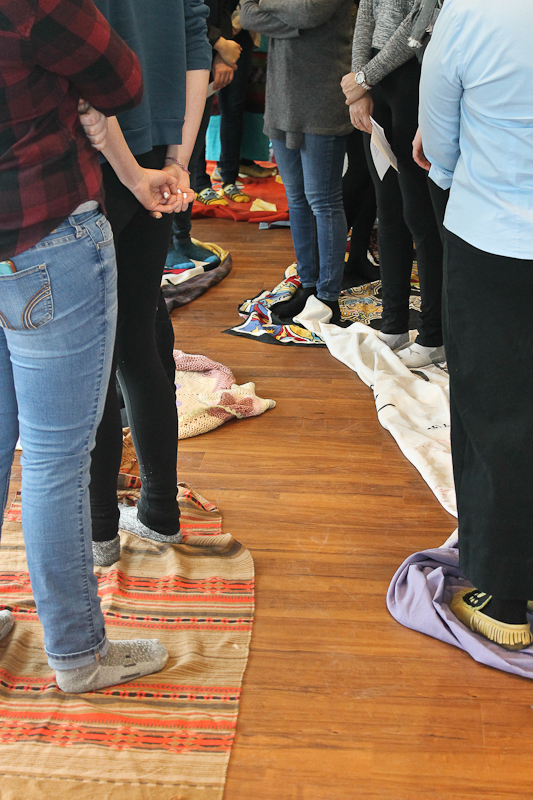A discussion on international relations between Canada’s Indigenous peoples and the country’s colonizers to explore revitalizing balance between Canada’s inner nations took place March 13 at the University of Ottawa (U of O).
Carleton professor Kathlean Fitzpatrick organized the event through her senior research fellowship in U of O’s department of international development and global studies.
“We’re all Indigenous from somewhere,” Fitzpatrick said to the audience. “Reconciliation begins with truth.”
For Josh Lewis, an educator at the event, learning the histories of Canada’s Indigenous peoples and then sharing knowledge is key. Lewis was one of the facilitators for an activity known as the Blanket Exercise.
“Everyone’s going to take what they want from this exercise,” Lewis said after the event. “What they take with them, I hope they share with their family and their friends.”
The Blanket Exercise was developed by KAIROS Canada, which represents 11 different religious organizations and churches. The exercise’s goal is to raise awareness and understanding of the nation-to-nation relationship between Indigenous and non-Indigenous peoples in Canada.
The exercise uses the audience and a floor covered in connecting blankets to demonstrate about 500 years of Indigenous peoples’ history in Canada. It begins with an Indigenous creation story, introduces treaties made between the Indigenous nations, and then explains the colonization of Canada.
The audience had their blankets kicked in and separated from others as their land shrunk. As divisions grew, new constraints were introduced such as assimilation policies and residential schools.
As these limits were imposed, audience members were asked to return to their seats as they represented a portion of the Indigenous population that had either starved, succumbed to disease, been lost to the brutality of a residential school, or been unable to integrate back into their community.
Of about 70 initial participants, 12 people were left standing on folded blankets.
“It hooked me,” said Kevin Budning, a U of O student who attended the event. Budning was one of the participants left standing.
Lewis said he hopes the exercise will make its way into teacher’s college. When he graduated, he was the only one out of 90 students who had a background in native studies.
Overall, this was a concern voiced by students in the discussion circle following the exercise. Some said they wished Indigenous history had a larger presence in Canadian school curricula.
For Cecilia Badger, a mother of four and a residential school survivor, the most important part of the event was the awareness it brought.
“It’s not the sad part of it that I want them to take with them,” she said.
What Badger said she wants is for people to “understand the impact” colonization and government manipulation had.
The issue with Canadian Aboriginal policy, Fitzpatrick said, is the denationalization of the Indigenous nations.
“They’ve made them a domestic issue that they control through . . . the authority of a bureaucracy called Aboriginal Affairs,” she said. “It lowers and changes the nature of the original relationship, which was between two nations.”
Fitzpatrick said development is not just based on economics.
“Political elites and institutions are mirrors of ourselves,” she said.






